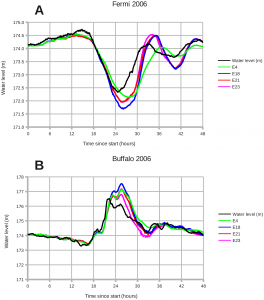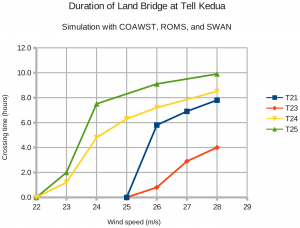My latest scientific paper is an ocean modeling study that examines the influence of wind direction on storm surge. This particular question grew out of an embarrassing mistake I made during my first semester of graduate school at the University of Colorado. The full citation is:
Drews, Carl (2015) Directional Storm Surge in Enclosed Seas: The Red Sea, the Adriatic, and Venice. Journal of Marine Science and Engineering 3(2), 356-367. doi:10.3390/jmse3020356
The Adriatic case study looked at winds blowing toward the city of Venice, Italy. I calculated a maximum surge of 2.02 meters when winds are blowing from 320° Cartesian; this result agrees with the historical maximum surge of 1.94 meters recorded on November 4, 1966.
Why not the Gulf of Aqaba?
The Red Sea case study examined the wind-driven storm surge and wind setdown in the northern reaches of the Red Sea. The COAWST/ROMS ocean model shows that although sea levels at Suez can drop to 1.72 meters below sea level (without tides), the Gulf of Aqaba is too deep to generate significant storm surge or wind setdown. The sea level at Aqaba changes by only ±5 centimeters, with even smaller variation at Nuweiba and the Straits of Tiran (JMSE Figure 8).
5 centimeters is not enough provide a dry passage for Moses and the Israelites through the Red Sea, nor is it enough water to drown Pharaoh’s chariot army when the wind ceases and the waters return. For more detailed information on why the Aqaba crossings won’t work, please see my longer article at migdolbook.com: Crossing the Red Sea at Aqaba? No.

